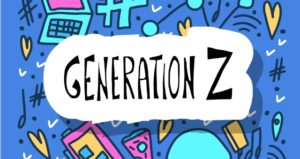
Five Tips to Creating a More Engaging Online Course for Adult Learners
As society has evolved, so too has education. To meet the changing needs of our world, an explosion of online education has focused on adult


As society has evolved, so too has education. To meet the changing needs of our world, an explosion of online education has focused on adult

Different generations of students have enrolled and graduated from higher education institutions for many decades. Throughout these decades, educators have been using the same strategies
There is a landfill of studies—more than 3,000 articles and 600 books. If you Google “learning styles” you will get 9.7 million hits in 0.16 seconds. “Learning styles workshops” produces 7.8 million hits and even “critiques of learning styles” garners 460,000 items. By the numbers of instruments, handbooks, and workshops advertised online, learning styles must be a sizable industry. But after diving into the pile, my mind was full of grit and cynicism. A zealous quest has created claims and theories so bad they aren’t even wrong. There had to be something useful in all this effort or despair would settle over me like so much dust.
You should know that evidence supporting learning styles is being challenged. Find below the reference for a research article authored by a respected collection of educational researchers that disputes the fundamental assumption that students with a designated learning style (visual, auditory, or kinesthetic, for example) learn more when the instructional methods match their style. Also referenced is a brief, nontechnical article authored by Cedar Riener and Daniel Willingham, who begin their piece with this nonequivocating statement, “There is no credible evidence that learning styles exist.” (p. 33)

A new edition of a classic book on the curriculum suggests eight lessons from the learning literature with implications for course and curriculum planning. Any list like this tends to simplify a lot of complicated research and offer generalizations that apply most, but certainly not all, of the time. Despite these caveats, lists like this are valuable. They give busy faculty a sense of the landscape and offer principles that can guide decision making, in this case about courses and curricula.
PowerPoint is versatile in allowing us to add multimedia (graphics, sound, audio, video, text, animation, etc.) to our presentations for keeping online students’ rapt attention. But how much multimedia should you add? In answering this question, I find that taking into consideration students’ learning styles and cultural/international backgrounds can help to lessen the risk of using too much or too little multimedia in your online PPTs.
How do you motivate online learners?
It’s an age-old question that continues to stump online instructors as well as the managers of distance education programs trying to solve the attrition problem that continues to drag down this otherwise thriving segment of higher education.
In the online classroom, faculty work hard to engage their distance learners and build a strong sense of academic community in the electronic setting. Screencasting can be an effective and easy way to do this. Screencasting allows you to take a digital video of what you are doing on your computer desktop, and most screencasting tools allow you to narrate your video while recording. The possible uses for screencasting are endless; these include providing course orientations, delivering instructional lectures, providing feedback, and encouraging student sharing.
To promote learning, we encourage our students to be actively involved in class discussions by asking and answering questions. Even if we do not include
There’s been a lot written about learning styles. More than 650 books published in the United States and Canada alone. Do a Google search on “learning styles” and you get over 2,000,000 results. Most people know if they’re a visual, auditory, or kinesthetic learner, and instructors often try to design their courses to accommodate the different learning styles so as to ensure that each student’s strongest modality is represented in some fashion.
Get exclusive access to programs, reports, podcast episodes, articles, and more!